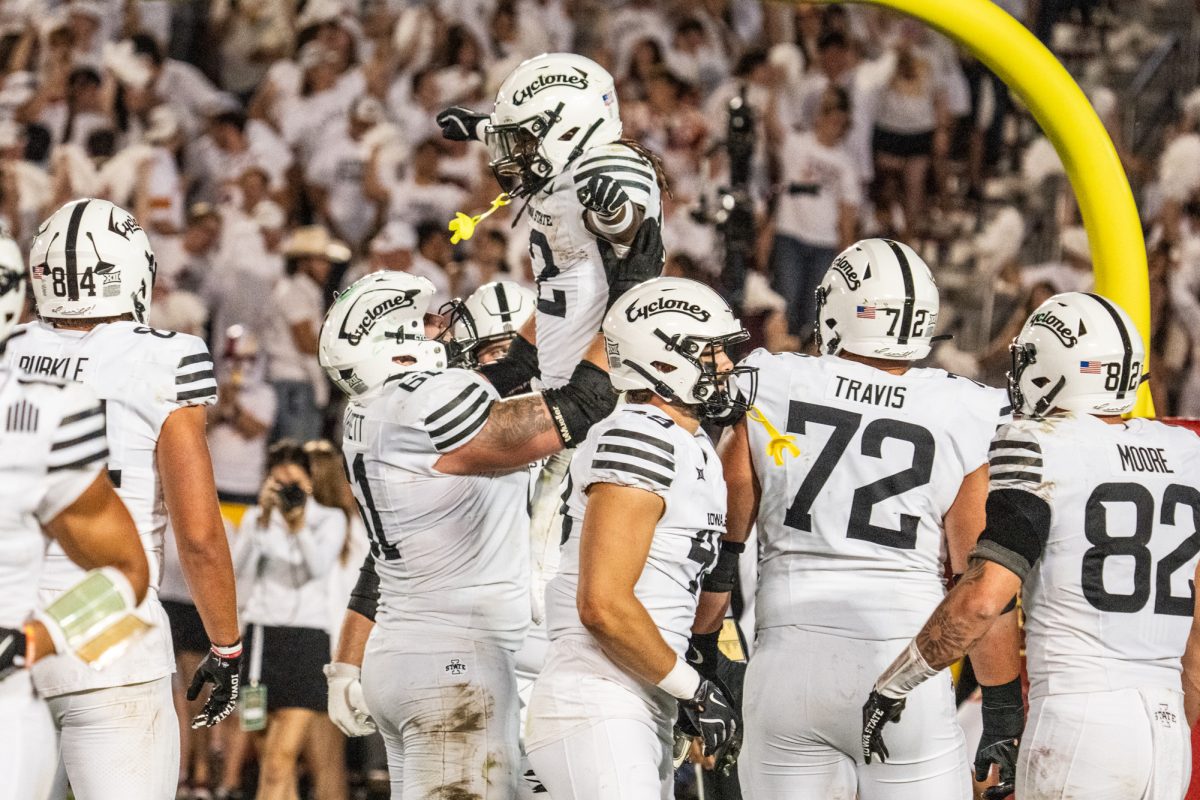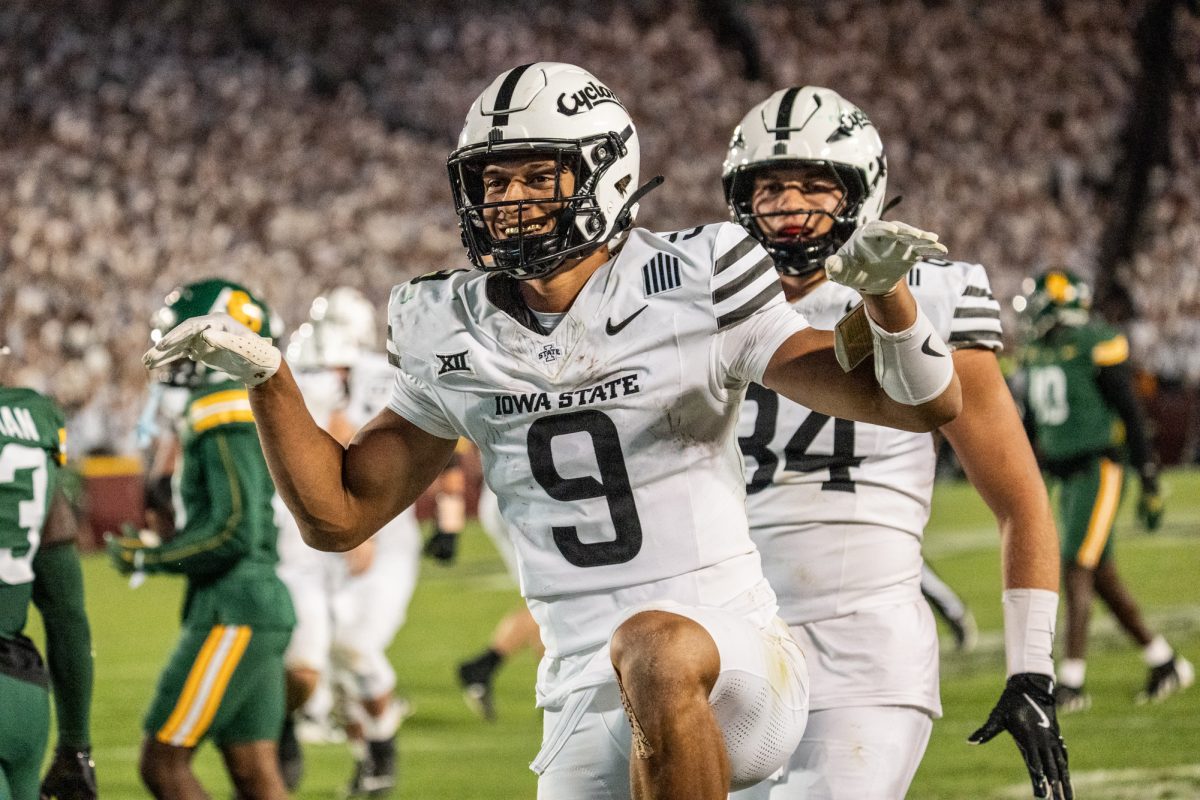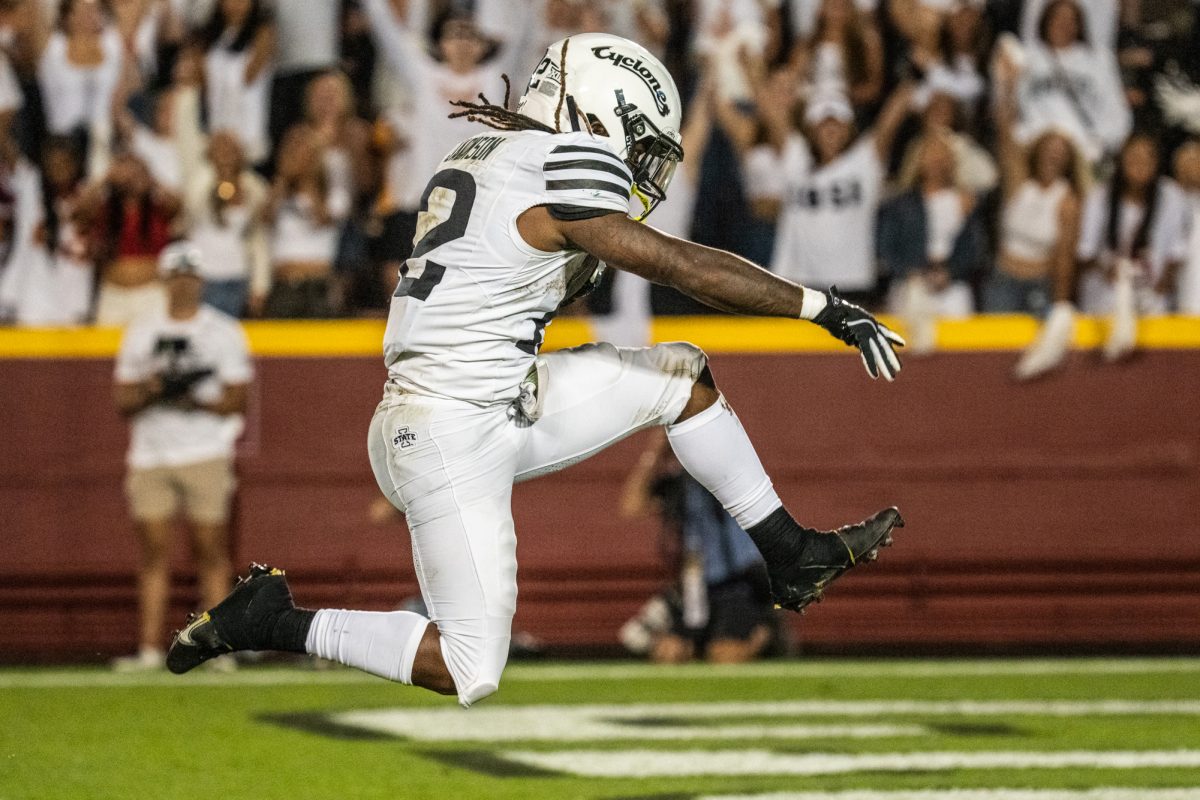Grooviness and bluegrass just don’t mix
February 17, 1999
Daily Staff Writer
“Who Cares a Lot? The Greatest Hits”
Faith No More
Although Faith No More never really received commercial success or reached beyond its popular early ’90s tongue-and-cheek hit, “Epic,” the band has managed to accumulate 16 years worth of music for the double-disc set, “Who Cares a Lot?”
The band’s tendency to bounce from one brand of music to another was one of its trademarks in its earlier years, especially outside of the United States. “Who Cares a Lot?” captures the eloquent variety that gave individuality and character to the continually evolving band.
Just like in the band’s early days, Faith No More’s music still does the talking.
Skipping bass licks and drum patterns provide a tick-tock clockwork style turned horrific with the addition of Mike Patton’s hissing lyrics on tracks like “Midlife Crisis” and “Last Cup of Sorrow.”
Roddy Bottum’s moody keyboards on “Epic” and “Stripsearch” transform the songs into works of art in a pseudo-gothic fashion.
And like a mood swing, pure punk ferocity emerges in the aggressive power chord guitars of “Digging the Grave” and “The Gentle Art of Making Enemies.”
Another Faith No More ear-opener was the band’s choice of cover songs. Long before Limp Bizkit amazed with “Faith,” the popular crooning styles of the Commodores and the Bee Gees were duplicated almost to perfection on the tracks “Easy” and “I Started a Joke.”
Patton’s vocals become ballad-like on these slow and seductive renditions.
The key element to Faith No More is the combined force of its pieces. When the band broke up, a more successful musical send-off could not have been executed.
And the added bonus of eight previously unreleased songs is the bow on the package.
5 stars out of five
— Ryan Rogness
“One Hundred”
The Controls
Native Manhattanites, beat dropper Mike Delaney (a.k.a. Dub-L) and lyricist Ann Colville have combined to form New York City’s latest addition to the growing trip-hop scene.
The pair met in 1996 through friends who thought the two musicians might make a good couple. It wasn’t long before the two discovered they shared a strong musical bond.
Dub-L, composer and producer of the album, uses a variety of instruments to create his own unique repertoire of sounds. His mixes include various arrangements that involve oboes, acoustic guitars and strings.
Dub-L doesn’t leave his hip-hop roots, though. With fat beat loops and “scratchadelic” sound effects, he paints a musical mural which blends modern and traditional styles.
Colville’s melodies, which weave emotion with melancholy, are accented by a pop sensibility. From track to track, Colville’s voice leaves an impression on the listener, digging below the surface yet hitting straight on target.
Also appearing on two tracks is rapper Aesop Rock, whose cataclysmic yet mellow rhymes are reminiscent of Busta Rhymes’ apocalyptic “Extinction Level Event.”
“One Hundred,” released by Sm:)e Communications, is 11 tracks of trip-pop and hip-hop excellence.
The album’s blend of catchy trip-hop melodies, old school hip-hop and classic instrumentation leaves you wishing your parents had bought you a drum machine instead of a Nintendo when you were 10.
4 1/2 stars out of five
— Sam Johnson
“Groovegrass 101”
The Groovegrass Boyz
Listening to “Groovegrass 101” is about as much fun as getting your hand caught in an industrial meatgrinder, then rubbing the stub in seawater while watching reruns of “Soul Train.”
Even if one is intrigued by fusions such as folk/rock, punked-up Irish folk tunes and new age versions of 12th century Italian saltalleros, you will gag on the combination of funk and bluegrass.
Let’s get something straight: funk grooviness and bluegrass jigginess mix about as well as whole milk and lemon juice with a hot wax chaser served in a dirty glass.
You know what bluegrass sounds like, and you know what funk sounds like.
While one might well see how this could have worked by simply creating funk versions of bluegrass classics, the artists involved (Bootsy Collins, Doc Watson and Mac Wiseman) decided to do something altogether different.
By leaving in much more than a hint of country twang and sentimentality, the musicians created a version of “Wabash Cannonball” that would make Boxcar Willie open fire on a crowded White Castle.
But with this album in hand, his defense team would easily get him off because it sucks so bad that no jury would convict him for taking human life as a response.
You would expect Bootsy Collins to be able to pull off a cool version of “Walkin’ After Midnight,” but this album sounds like “Funk Night at the Grand Ole Opry.” It sounds like Minnie Pearl trying to do a bad imitation of Parliament Funkadelic.
“Groovegrass 101” would definitely have benefited from more P-Funk and less Opry.
At one point, while listening to “Blue Moon of Kentucky” being butchered by these otherwise masterful artists, I swear the seventh seal was broken and the end of world was signaled. I still have to clean the vomit out of my CD player.
This piece of mutated nonsense will actually make you long for the simplicity and purity of “Hee Haw.”
Other tracks to completely avoid are “Howdy” (which uses about 40 samples of Minnie Pearl’s infamous tagline), “Stand By Me,” “Cypress Grove,” “Stuck Like Glue” and many, many more.
0 stars out of five
— Greg Jerrett
“Boo-Tay”
Bare Jr.
Bare Jr.’s debut “Boo-Tay” goes to show that decent rock bands can come out of Nashville.
Guitarist/lead singer/songwriter Bobby Bare Jr. has a long musical history, including a Grammy nomination at age 7. His Nashville influences are evident, however, as a few of Bare Jr.’s songs are borderline Randy Travis.
Comparatively, Bare Jr.’s lyrical style is all too similar to the lyrical style of Everclear’s Art Alexis. Although Jr.’s jams rock much harder than Alexis’ weak riffs, Bare Jr.’s music is basically Everclear gone to Nashville, with a dulcimer twist.
Self-described as “an unusual rock band,” Bare Jr. has an unusual background. A string of D.W.I.s followed by jail and rehab scared Bare Jr. away from drinking and back to his guitar.
After combining with bassist Dean Tomasek, Bare Jr. was formed.
From track to track, “Boo-Tay” is unarguably hard-hitting, yet lacks originality and creativity. The overdriven dulcimer does not impress, and occasional backing keyboards stretch for unimaginative Steppenwolf rock styles.
2 stars out of five
— Sam Johnson






